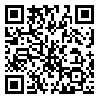Thu, Jan 1, 2026
| فارسی
Volume 24, Issue 1 (Spring 2018)
IJPCP 2018, 24(1): 92-107 |
Back to browse issues page
Download citation:
BibTeX | RIS | EndNote | Medlars | ProCite | Reference Manager | RefWorks
Send citation to:



BibTeX | RIS | EndNote | Medlars | ProCite | Reference Manager | RefWorks
Send citation to:
Khalili N, Panjalizadeh M E, Jahani Y. Validation of the Brief Persian Version of the Affective Temperament Auto-Questionnaire TEMPS-A . IJPCP 2018; 24 (1) :92-107
URL: http://ijpcp.iums.ac.ir/article-1-2665-en.html
URL: http://ijpcp.iums.ac.ir/article-1-2665-en.html
1- Kerman Neuroscience Research Center, Neuropharmacology Research Center, Kerman University of Medical Sciences, Kerman, Iran. , Email: navidkhalili2000@yahoo.com
2- Modeling in Health Research Center, Institute for Futures Studies in Health, Kerman University of Medical Sciences, Kerman, Iran
3- Department of Biostatistics and Epidemiology, Faculty of Public Health, Kerman University of Medical Sciences, Kerman, Iran. 5. Modeling in Health Research Center, Institute for Futures Studies in Health, Kerman University of Medical Sciences, Kerman, Ira
2- Modeling in Health Research Center, Institute for Futures Studies in Health, Kerman University of Medical Sciences, Kerman, Iran
3- Department of Biostatistics and Epidemiology, Faculty of Public Health, Kerman University of Medical Sciences, Kerman, Iran. 5. Modeling in Health Research Center, Institute for Futures Studies in Health, Kerman University of Medical Sciences, Kerman, Ira
Abstract: (6970 Views)
Objectives Affective temperaments are subclinical trait manifestations related to mood disorders. The temperament evaluation of Memphis, Pisa, Paris, and San Diego autoquestionnaire (TEMPS-A) has been translated into more than 25 languages worldwide and has been shortened in a few of these translations. The primary objective of the study is to validate a brief Persian version of the TEMPS-A.
Methods The sample consisted of 694 University students educated in 10 different faculties of Bahonar University of Kerman, Iran. After translation and back-translation process, participants were asked to complete the Persian translation of the original 110-item TEMPS-A. The exploratory factor was analyzed using the principal component analysis method. A five-factor solution was applied based on other studies and theoretical assumptions.
Results The five factors such as irritability, anxiety, dysthymic, cyclothymic, and hyperthymic temperaments with a total of 35 items showed acceptable Cronbach’s alpha 0.63, 0.63, 0.66, 0.6, and 0.6, respectively. Anxious-dysthymic and anxious-irritability pairs showed the highest Pearson’s correlation coefficient of 0.4. Female subjects scored significantly more on the dysthymic, anxiety, and irritability temperaments and less on the cyclothymic temperament. The subscales of the short Persian version showed satisfactory Pearson’s correlation coefficients between 0.48 and 0.78 with similar subscales from the Persian translation of 110-item TEMPS-A.
Conclusion The 35-item Persian version of the TEMPS-A demonstrated acceptable internal consistency and sufficient correlation with the original version, and hence, can be conveniently used for the temperament studies of individuals using Persian language.
Methods The sample consisted of 694 University students educated in 10 different faculties of Bahonar University of Kerman, Iran. After translation and back-translation process, participants were asked to complete the Persian translation of the original 110-item TEMPS-A. The exploratory factor was analyzed using the principal component analysis method. A five-factor solution was applied based on other studies and theoretical assumptions.
Results The five factors such as irritability, anxiety, dysthymic, cyclothymic, and hyperthymic temperaments with a total of 35 items showed acceptable Cronbach’s alpha 0.63, 0.63, 0.66, 0.6, and 0.6, respectively. Anxious-dysthymic and anxious-irritability pairs showed the highest Pearson’s correlation coefficient of 0.4. Female subjects scored significantly more on the dysthymic, anxiety, and irritability temperaments and less on the cyclothymic temperament. The subscales of the short Persian version showed satisfactory Pearson’s correlation coefficients between 0.48 and 0.78 with similar subscales from the Persian translation of 110-item TEMPS-A.
Conclusion The 35-item Persian version of the TEMPS-A demonstrated acceptable internal consistency and sufficient correlation with the original version, and hence, can be conveniently used for the temperament studies of individuals using Persian language.
Type of Study: Original Research |
Subject:
Psychiatry and Psychology
Received: 2017/02/23 | Accepted: 2017/07/23 | Published: 2018/04/1
Received: 2017/02/23 | Accepted: 2017/07/23 | Published: 2018/04/1
| Rights and permissions | |
 |
This work is licensed under a Creative Commons Attribution-NonCommercial 4.0 International License. |






